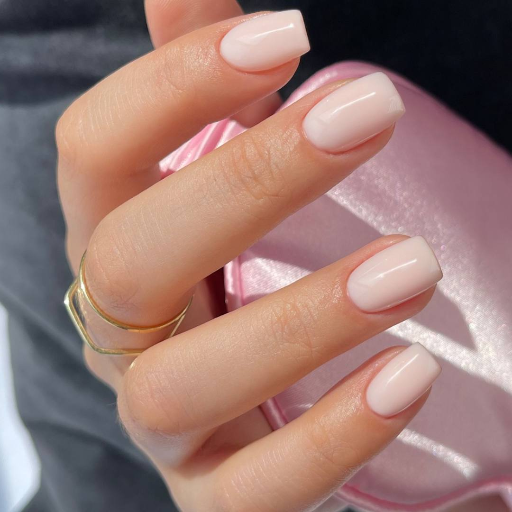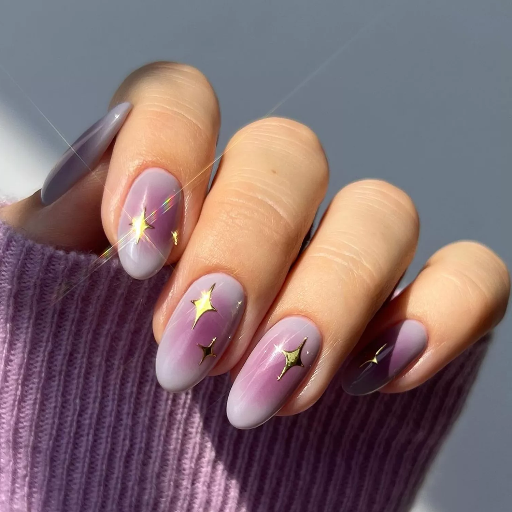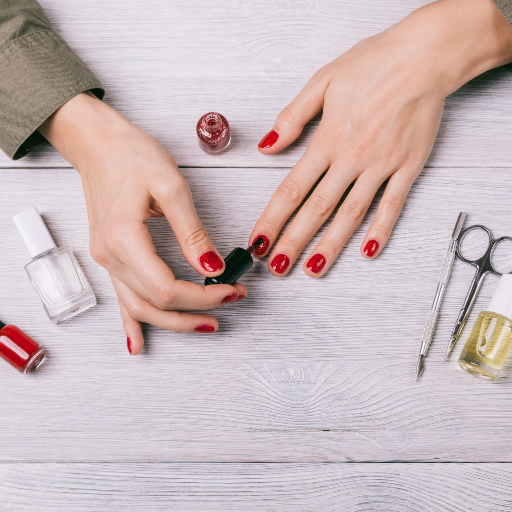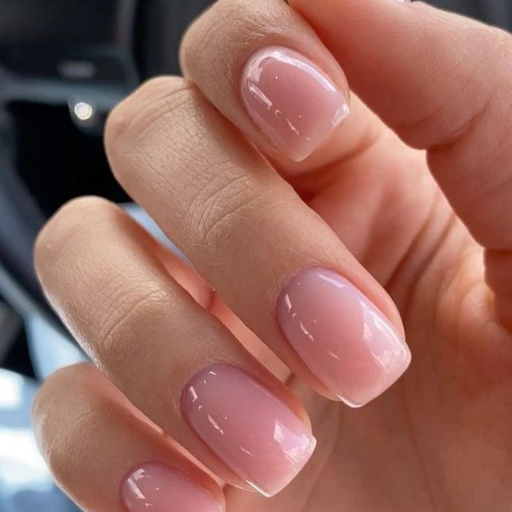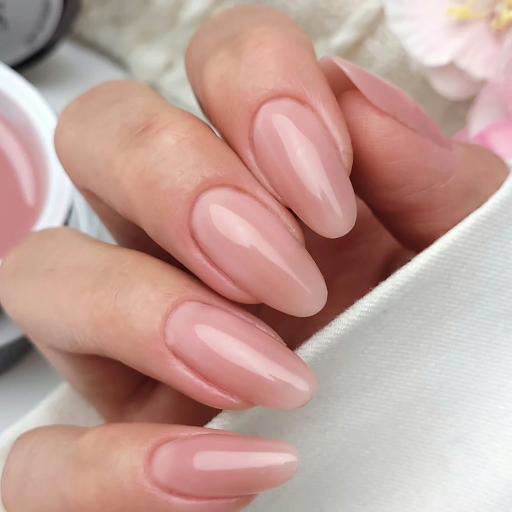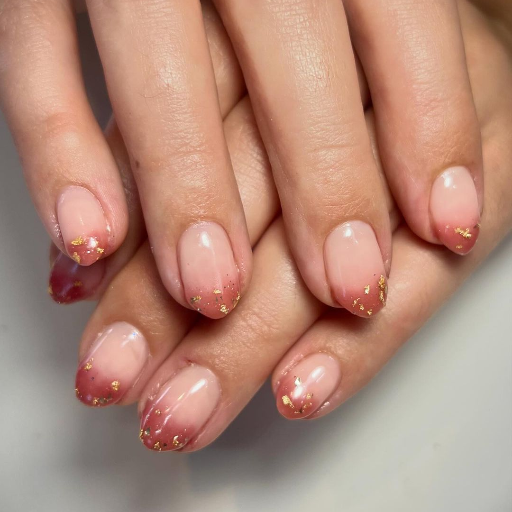As critical as it may be in defining personal care, beauty, or fashion, many people have difficulty trying to identify their skin tone and their undertone. This guide is meant to make skin tone classification easy and give a step-by-step process for assessing one’s skin. Aided by the nuances of one’s skin, informed choices on skincare, make-up, and clothing selection can be made.
This article will take you through the basics of skin tone, how it is defined, how it is complemented by skin undertone, and its relevance in different facets of life. Besides, it will present pertinent images and practical examples for you to understand and ascertain your skin tone with confidence. This does not matter whether you are hearing about this for the first time or want to brush your already acquiring knowledge; it makes for a stiff framework to advance one’s comprehension of skin tone.
What is a Skin Tone Chart and How Does it Work?
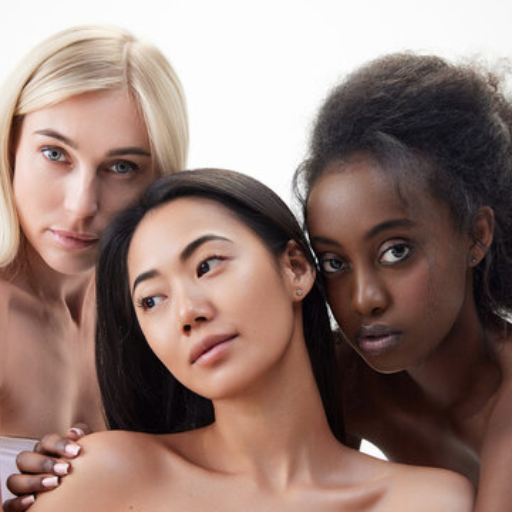
A skin tone chart is a tool for identifying and placing a variety of human skin coloration in a systematic framework. Such a chart categorizes skin color in a defined system of primary colors such as fair or light, medium, and deep, with further sub-categorizations within them as well. In this way, it is easier to understand one’s skin color in a more specific manner on a practical level and regarding medical and aesthetic purposes. The skin tone chart is effective because it serves to offer consumers the skin comparison baseline they require to determine which shade best matches their skin tone. Often, the skin being analyzed is done so in light and naturally illuminated settings for the best accuracy with this method.
How to Use a Skin Tone Chart Effectively
To effectively utilize a skin tone chart, it is crucial to ensure that the skin is clean without makeup on it as this could distort the true tone of the skin. It is also advised to complete this evaluation under natural daylight since using an artificial light source often impacts what shade your skin appears. Position the chart next to your skin at the inner wrist, neck, or jawline as these parts are the least likely to have been disturbed by factors such as the sun. Determine which of the measured areas best resembles the shades seen on the chart and pick that one.
If perfect accuracy is required, it is essential to take into consideration the undertone which can either be warm, cool, or neutral. Warm undertones include golden or yellow, cool undertones have a tinge of blue or pink while neutral undertones are a mixture of the two. A lot of charts will provide instructions on how to identify one’s undertones based on the color of veins; for instance, green veins indicate a warm undertone blue a cool undertone or the effectiveness of gold and silver against the skin. Following these steps will enable the chart to provide accurate recommendations on suitable cosmetics, wardrobes, or dermatological treatments.
Understanding Different Types of Skin Tone
The following are some known classifications of skin tones, these include, light, medium, and dark tones, each of which has many grades under it. As a result of having less melanin, fair-toned skin is more prone to damage from the sun even though it is common for cool undertones to accompany this skin tone. Some skin types are known as medium, one of them is the olive tone and they are likely to have more melanin pigments, thus neutral tones along with other combinations suit them better. Dark skin tones are high in melanin and often have warm undertones. w Knowing where your skin will likely sit in this range is extremely important for the selection of skin products and makeup tools as such would allow you to pick out products that not only complement your features but are good for your skin.
Why Knowing Your Skin Tone is Important
Understanding your skin tone is crucial for making informed decisions about skincare and cosmetic products, ensuring they complement your natural complexion rather than cause irritation or mismatched appearances. For skincare, knowing your skin tone helps in selecting the right sunscreen, moisturizers, and treatments, as certain ingredients and formulations work better on specific tones. Additionally, identifying your undertone—whether warm, cool, or neutral—can simplify choosing foundation, concealer, and other makeup products that flawlessly blend with your skin. Beyond cosmetics, being aware of your skin tone can also guide you in preventing hyperpigmentation and uneven tone by tailoring protection and care to your skin’s unique needs. Ultimately, this knowledge helps maintain your skin’s health and natural beauty effectively over time.
How to Determine Your Skin Tone and Undertone

To establish your skin tone, you need to understand your skin’s relationship with light, specifically natural light or daylight. Generally, skin tones are broadly classified into four: light, medium, tan, and deep. It is recommended that you switch to less exposed areas of your skin such as the inner arms and the under part of your wrist as places where you are looking for assessment indicators.
To discover your stereotyping tone, you should focus on the color aspect that lies below your skin surface. There are 3 main sub-tones which include:
Someone who would possess a warm undertone will have a tinge of golden-peach-yellow in them. This person will have veins that appear greenish and gold jewelry suits them more than silver.
Pink, red, and blue undertones are classified as cool. If silver jewelry goes well with your skin and your veins are bluish in color, you possess a cool undertone.
A neutral undertone means both warm and cool undertones are present in the person, both gold and silver look good on them and their veins can be either bluish or greenish.
By using these observations logically, an individual can easily comprehend their skin color as well as the base tones.
Steps to Determine Your Skin Tone at Home
Scrutinize Your Veins
First, you want to look at the veins on the underside of your wrist in direct sunlight. If your veins appear green, it indicates you possess warm undertones. If they remain blue or purple in appearance, that is a sign of cool undertones. In the case where your veins are between the two colors, it indicates that you have a neutral undertone.
Conduct The Jewelry Test
You are required to test both your silver and gold jewelry against your skin. If the gold jewelry seems to look better on you, warm undertones are dominant. On the other hand, cool undertones are available when you spot silver jewelry fashioning better against your skin. In the scenario when both of them look pleasing to your skin, you have a neutral tone.
Analyze Your Skin Response To The Sun
One may take into consideration how their skin reacts when subjected to the sun. For instance, if one burns or tans by heating the skin but not too much, then one is likely to have warm undertones. For neater looks though, cooler undertones seem to work better as they avoid enhanced skin. Things are difficult for neutral undertone as they don’t have clear-cut distinctions and tend to follow both sets of reactions.
Use A White Plain Sheet of paper
Take a piece of white paper and place it alongside your face in the sun. If you spot your skin color to be yellowish or golden compared to the paper, then this indicates you possess warm undertones. In situations where it is pink, rosy, or bluish, then cool hues are dominant. However, if the colors are mixed somewhere around neutral it tends to indicate neutral.
Think of Colors That Suit You
Notice clothes approaching your skin. For people with warm undertones, earth tones are most likely to improve the look; these earth tones include red, orange, yellow, and olive. For cool undertones, the recommended colors include blue, green, or purple. For those who look good in many colors, they are likely to be neutral undertones.
After completing these procedures, there is no doubt about the result of your complexion and undertone and thus you are in a position to use concealers and various attachments as well as clothing that will emphasize your beauty.
Using Vein Color to Identify Undertones
Wrist veins can also determine the skin’s undertones. In general dark wrist veins or a bluish/purple color indicate that the person has a cool undertone. However, the presence of a greenish color around veins indicates that the individual has a warm undertone, and the blue-green color is mostly pronounced in neutral undertones. The reason as to why this method particularly works on individuals is because of the color of their veins which is suppressed by exposure to the skin which in turn affects the color of their skin. When put together with other indicators such as how a person’s skin adjusts to heavy sun or other light sources or which Hues work best for the individual, this analysis is both quick and effective in determining the makeup selection along with the pattern that the individual should use.
Common Mistakes in Determining Skin Tone
Another thing that is perhaps universal and I find very frequent among many of my colleagues is judging skin tone under the tyranny of overhead lighting exclusively. This lighting affects how the nadir can properly display undertones and, therefore, leads to inaccuracies. Something else I also focus on is the error margin which comes from narrowing the discrimination of the client to only one method such as utilizing only the vein color and not taking into account others like how skin skin reacts to the sun or what is perceived as flattering. Also, I have come to understand that placing too much emphasis on the change in seasons is misleading – for example, yes, the skin may darken or pallor through the season, the complexion, however, seldom changes. A multiplicity of approaches coupled with the use of daylight especially in the sampling stage is the best approach.
What are Skin Undertones and Why Do They Matter?

Skin undertones explain the color that sits beneath the skin surface which can be classified into three broad categories namely, cool, warm, and neutral. These can be however unable to change due to factors such as tanning and skin color shifts. Skin undertones are crucial components and elements in skin depigmentation because they give the correct color selection that suits the individual, especially in clothing, makeup, and accessories that enhance the individual’s general appearance. If undertones are partnered, the natural features can stand out, but if not, it can lead to a haphazard or pale appearance. There is thus no doubt that color matching is necessary when trying to achieve balance in terms of the individual’s style and combining various shades while building personal and aesthetic appeal.
Difference Between Skin Tone and Undertone
Skin tone is defined as the color of the surface skin which varies between light and dark. It is determined chiefly by the amount of melanin present in an individual and the exposure of the individual to sunlight. The skin tone of an individual may also change due to tanning, seasons, and certain skin diseases. The term undertone however refers to a more subtle shade, that is not affected by the external environment (or occurs below the surface of the skin) but is always there. Undertones are grouped into three general categories: warm (which includes yellows, peaches, or gold), cool (pinks, reds, or blues), and neutral (sited between warm and cool colors). Generally, skin color is easy to determine but skin undertones need to be assessed properly for instance the location of veins around the wrist, skin reaction to sunlight, and how skin reacts to gold, silver, or white shades. It is extremely important to comprehend this difference when skilled in selecting effective and adequate measures of dressing and makeup.
Exploring Cool, Warm, and Neutral Undertones
Identifying any undertone correctly has always been an evolution of various reliable techniques that combine the facts and the environment. People with cool undertones have always bluish or pinkish casts in their skin color and distinct blue or purple vein patterns on their wrists which complement their skin. Also, people with cool skin undertone type usually consider that silver jewelry is better suited for them than gold as it enhances their skin tone better. Moreover, their skin can be prone to burning more easily when exposed to sunlight.
On the other hand, people with warm undertones have always golden, peach, or yellow casts in their skin color and greenish veins on their wrists. People with warm undertones usually prefer gold jewelry since it blends with their warm skin tones. Such skin types, in general, tan easily under the sun and are rarely sunburnt.
For neutral undertones, the complexion is more of a fusion of the two complements for warm and cool. There may be an absence of deep blue or green colors or the veins may present with a combination of the two. Similarly, necklines and earrings come in both gold and silver but people with neutral skin types can wear both easily. This kind of skin typically responds well to sun exposure, resulting in well-balanced tanning without the risk of burning or redness.
An accurate understanding of the undertones is achieved by assessing those aspects in combination, rather than using one of them as a standalone measure, thus ensuring comprehensive and exact evaluation for individualized beauty or fashion choices.
How Skin Undertones Affect Color Choices
Before complimenting someone on their features or appearance makeup artists look for the person’s skin undertone. With a deeper understanding of skin undertones funerals can be styled similarly to better suit an individual’s complexion. For those individuals with a warm complexion golden, orange, corals, and earthy colors become colder tones, making them better suited for that particular group. Further, for those with a cooler complexion a blue, purple, emerald, or silver necklace would best complement their skin. Neutral colors mostly suit anyone’s complexion. The Neutral undertone also makes it easier to wear warm-toned or cooler-toned colors Lastly the understanding of skin undertones, also helps in guiding skin care decisions around fashion, makeup, and hair since one can cast a significant balance and highlight around a person’s original skin color.
How to Use Your Skin Tone and Undertones for Makeup

When choosing makeup according to the skin tone and undertone, it is advisable to begin with a foundation or concealer that best matches the skin complexion. For those with warm undertones, yellow, peach, or golden base products are best suited, however, those with cool undertones are best complemented by pink or red-based base products. Considerable consumers of neutral undertones can also be supplied with products that have warm and cool properties, which are usually termed neutral in cosmetic line ranges. In the case of eye shadows, peculiarly those with warm undertones can use bronze, copper or earthy colors as well. However, cool undertones are best suited with shadows made from gray, blue, or jewel colors. The same rule applies to lipstick shades, those that have warm undertones are best suited by coral, brick, or golden reds whereas frost shades with berry, plum, or blue-based reds flatter cool-toned undertones. Knowing the kind of your skin undertones gives one a great opportunity to apply makeup that complements the natural skin tone and looks radiant at the same time.
Finding the Right Foundation Match
Selection of the ideal foundation color and product is greatly influenced by an understanding of skin tone, undertone, and skin type, however, personalization is key to achieving that perfect match. I would suggest a net exacting conclusion here, including where the skin falls: I have a Deep complexion with a warm undertone and the four basic tones of skin i.e., light, medium, tan, and deep are also there for further differentiation. Use natural lighting to swatch a few shades on your jawline — the jawbone area provides one of the best terrains for getting the right color match of foundation as it is close to the skin’s natural tone. With Os so darker than me, the tone seems to sit perfectly when it’s a warm BEIGE, hence transparent no ash effect visually apparent on the skin.
Also, ascertain what skin type you have e.g. an especially oily or a dry/patchy or a combination or edema has itself got its index – -I do recommend dry matured skin to make use of primer or dewy finish while for oily – use nitty – matte oil-free lotion. N gala wants to wear – option for them uses with nitric on areas where oily or dry but is quite thin, using long wear or buildable foundations or even a lightweight one is where I have met my expectation on the formulation.
Just as important is the evaluation of the durability and resistance to oxidation of a product since certain products may change color, for instance, oxidizing becoming darker when applied. Foundations have to be color-checked for a match to the skin in terms of texture, application, and finish during the trials. As a last stage before application and approval of any color, it is recommended that the color be checked for artificial and natural light.
Using Skin Tone to Select Complementary Colors
Using complementary colors based on someone’s skin tone helps to emphasize their natural features and create a coordinated look. Skin tones tend to have three categories which include warm, cool, and neutral undertones. The undertone may be the most critical aspect of identifying an individual and it can often be determined by looking at the veins on the wrists. A warm undertone would usually have greenish veins while a bluish coloration would indicate a cool tonality and when is a mix of both then it is neutral.
For warm undertones, a good choice would be earthy colors namely gold, peach, coral, warm reds, etc as these colors enhance the natural warmth of the skin. Jewel tones such as sapphires, emeralds, or cool pinks are the best match for cool undertones as they get the best contrast off the warm undertones helping with brightness. Neutral undertones are quite flexible allowing one to experiment with warm colors cool colors, or even try muted or pastel shades.
Lastly, when one chooses a color palette in terms of selecting clothes, makeup, or accessories tone and overall appearance should also be strongly regarded. Trying to use shades in daylight and focusing on how they suit the person’s skin tone may work towards achieving a refined appearance.
Choosing Hair Colors to Flatter Your Skin Tone
Selecting complementary hair colors is about matching a color with a person’s skin tone and correct matching in terms of undertone is essential. For A and A- (warm undertones) individuals, such as golden blonde, honey, caramel, butterscotch, or warm brown would be very supportive. On the other hand, ashy blonde, platinum, and black are compliments for cooler skin tones browns and enhance the skin. Individuals with neutral undertones have the luxury of using a great range of colors, soft beige and beige blondes, chestnut browns, and even stronger vibrant colors such as burgundy and rose gold.
Another factor is the skin tone’s depth. The paler one is, that they are likely to go for pastel or softer ones, and vice versa for darker skin. Maintenance and day-to-day life are a relevant consideration as some might require frequent touch-ups or lose their vibrancy. For specifics, always consult a professional stylist which may also provide colors to test one’s expectations. Remember to focus on the maintenance, especially, if the grey goes softer and might require constant touch up.
How to Achieve a Balanced Look with Neutral Skin

If you have neutral skin tones, your complexion maturation provides a great leeway for experimenting with several color palettes. Typically, neutral skin blends with both the cool and warm color palettes easily, allowing flexibility in achieving color balance. For a makeup palette, tones like peach, rose, mauve, and taupe can come in handy in enhancing a pleasant overall natural look. Based on the final look, clothing could incorporate any of the earth tones, jewel tones, or sometimes light pastels.
For a more natural look, options like caramel, soft brown, or muted auburn which are light could be used for hair color but you could also explore using dark colors like platinum or khaki for a more fashionable look. The focus should be on ensuring that no extremes are adopted that could clash against each other or sound too much and wash out the tone of the skin. Each time you think of the style, try to focus on balance and harmony instead of competition, and the last thing you want is to steal attention from or overshadow your natural PH and features. You may also consult a stylist or a professional in makeup so that your choices and decisions can be refined more.
Tips for Enhancing Neutral Skin Tone
Avoid using color that counteracts the neutral skin tone: Apparel and accessories such as clothing and jewelry should be avoided with animal prints and bright colors that do not support the aesthetic purpose. Grayish tips also work very well with the rest of the items in the ensemble. Cool colors counterbalance the neutral look very well, examples include deep green and navy blue.
Makeup should include a wide assortment which includes a neutral foundation to maintain an even texture. Modest colors which can include peach, mauve, and dusty roses can easily harmonize with the natural colors of your lips. As such this has little to no effect on your overall complexion.
Pick your neutral palette based on how the skin’s dominance appears such as a blush or lipstick that is a rosy brown color that will blend seamlessly into a more rich red-brown skin tone. Colors that are extreme usually consist of red or turquoise as these go along nicely with darker skin tones. These specific skin tones also go hand in hand with pastel pinks and pale yellow pigments.
Use makeup tailored around the structure of your face. For the cheekbones and bridge of the lips incorporate champagne or golden pigments as the golden tint compliments the metallic pigments which adds depth and detail to the facial structure. This subtlety amplifies the prominent features without looking out of place.
Experiment with Hair Colors: If you have neutral undertones, then you can dye your hair in many different cool colors. For instance, you can try beige blonde or espresso brown, while rose gold can add a great modern twist though amends depending on maintenance choices. Start by using semi-permanent dyes or highlights to gradually change your look before going for the big change.
There’s a lot of science to how you match your skin tone with the right shade of the product, and the products you choose will effortlessly enhance your features while being a true reflection of your style. Always reach out to professionals for a more accurate approach to the look you want.
Understanding the Unique Complexion of Neutral Skin
I’m happy to help clarify any questions about the unique complexion of neutral skin. Neutral skin tones are characterized by an equal balance of warm and cool undertones, often making it easier to match foundation shades or clothing colors. When selecting makeup, foundations with a neutral or beige label usually work best, while a wide range of colors—both warm and cool—can complement this skin tone. For hair color, options like soft browns, ash blondes, or even multidimensional shades like caramel can align beautifully. The key is experimenting with versatile shades and consulting professionals when needed to enhance your overall look.
Makeup Tips for Neutral Undertones
When it comes to makeup for neutral undertones, I recommend focusing on products that cater to a balanced mix of warm and cool shades. Foundations with labels like “neutral,” “natural beige,” or “medium beige” tend to work best since they aren’t overly golden or pink. For blushes and lip colors, soft peaches, muted pinks, or mauve tones can enhance your complexion without clashing. Eyeshadow palettes that blend taupes, browns, and some cooler neutral shades like grays or bronzes are excellent choices as well. Remember, the key is to avoid extremes—stay within flattering tones that balance warm and cool spectrums. Always test products in natural light to ensure they harmonize with your skin tone.
References
Frequently Asked Questions (FAQ)
Q: How can I determine my skin undertone?
A: To determine your skin undertone, look at the veins on your wrist under natural light. If they appear blue or purple, you likely have cool undertones. If they are greenish, you probably have warm undertones. If you can’t definitively tell, you may have a neutral undertone.
Q: What is the difference between skin tone and skin undertone?
A: Skin tone refers to the surface color of your skin, such as light, medium, or dark. Skin undertone, on the other hand, is the subtle hue beneath the surface, which can be cool, warm, or neutral. Understanding your skin tone and undertone is essential for selecting the right makeup and clothing colors.
Q: How does melanin affect my skin tone?
A: Melanin is the pigment in the skin that determines the darkness or lightness of your skin tone. People with more melanin tend to have darker skin tones, while those with less melanin have lighter skin tones. Your skin tone can also be influenced by genetic factors and sun exposure.
Q: What colors look best on people with cool undertones?
A: People with cool undertones often look best in colors like blue, purple, and pink. Silver jewelry tends to complement cool skin better than gold. Choosing clothing and makeup with cool tones can make your skin look vibrant and healthy.
Q: Can my skin undertone change over time?
A: Your skin undertone is generally consistent throughout your life. However, factors such as age, sun exposure, and skin conditions can sometimes affect the appearance of your overall skin tone and cause temporary changes.
Q: What foundation shade should I choose based on my skin tone?
A: To find your perfect foundation shade, consider both your skin tone and undertone. Fair skin with cool undertones may benefit from pink-based foundations, while warm undertones in olive skin tones might be complemented by yellow or golden-based shades. Testing the foundation in natural light can help ensure a match.
Q: How does understanding your skin tone help with fashion choices?
A: Understanding your skin tone can significantly enhance your fashion choices by helping you select clothing and accessories that complement your natural hues. For instance, warm tones like reds and oranges might suit those with warm undertones, while cool and warm tones like blues and greens may flatter those with cool undertones.
Q: What role does the Fitzpatrick skin type play in understanding my skin?
A: The Fitzpatrick skin type classification helps in understanding your skin’s reaction to sun exposure. It ranges from Type I (very fair skin that burns easily) to Type VI (deep skin that rarely burns). Knowing your Fitzpatrick skin type can guide you in choosing appropriate sun protection and skincare products.
Q: Why is it important to see your skin in natural light when determining skin tone?
A: Observing your skin in natural light is crucial because artificial lighting can alter the appearance of your skin’s undertone and color. Natural light provides a true representation, helping you make more accurate decisions when selecting makeup and clothing colors.


